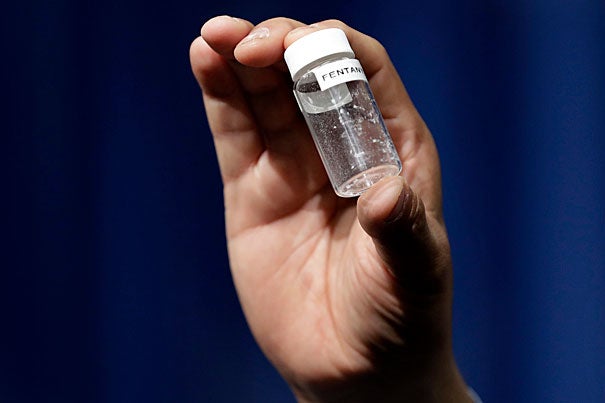
A study by Harvard-affiliated Beth Israel Deaconess Medical Center found that opioid-related demand for acute care services has outstripped the available supply, leading to increased costs and deaths.
Credit: BackyardProduction/iStock
Nation’s opioid emergency shows in findings on ICUs
Sharp rise in deaths, admissions, and cost across seven-year period
More like this
The same week that President Trump declared the nation’s opioid epidemic a national emergency, investigators at Harvard-affiliated Beth Israel Deaconess Medical Center reported a sharp rise in opioid-related admissions and deaths at U.S. intensive care units.
The new study, published in the Annals of the American Thoracic Society, is believed to be the first to quantify the impact of opioid abuse on critical care resources in the United States. The findings reveal that opioid-related demand for acute care services has outstripped the available supply.
The president announced the emergency designation on Thursday, following the recommendation of a presidential panel focused on the opioid crisis. The panel includes Professor Bertha K. Madras of Harvard Medical School.
Analyzing data from the period between Jan. 1, 2009, and Sept. 31, 2015, the Beth Israel researchers documented a 34 percent increase in overdose-related ICU admissions. The average cost of care per ICU overdose admission rose by 58 percent, from $58,517 in 2009 to $92,408 in 2015. Opioid deaths in the ICU nearly doubled during that same period.
“This study tells us that the opioid epidemic has made people sicker and killed more people, in spite of all the care we can provide in the ICU, including mechanical ventilation, acute dialysis, life support, and round-the-clock care,” said the study’s lead author, Jennifer P. Stevens, associate director of the medical intensive care unit at Beth Israel and an assistant professor of medicine at Harvard Medical School.
Using a national hospital database, Stevens and colleagues analyzed almost 23 million hospital admissions of adult patients in 162 hospitals in 44 states over a seven-year period. Among the more than 4 million patients requiring acute care, the researchers found 21,705 who were admitted to ICUs due to opioid overdoses.
The researchers’ analysis revealed that opioid-related ICU admissions increased an average of more than half a percent each year over the study period and that patients admitted to ICUs as a result of overdose required increasingly intensive care, including high-cost renal replacement therapy or dialysis. The mortality rates of these patients climbed at roughly the same rate, on average, with a steeper rise in deaths of patients admitted to the ICU for overdose after 2012.
These data not only document the scope of the opioid abuse epidemic, they also reveal its complexity. Stevens and colleagues suggest that any opioid overdose-related admission is a preventable one, and that the team’s findings not only represent the need for increased acute care resources, but also for expanded opioid-abuse prevention and treatment.
The authors noted that the data they analyzed came mainly from urban academic medical centers and may not reflect overdose-related acute care needs in other settings. They added that their methodology likely underestimates the burden of opioids on acute care resources by focusing on overdose admissions and not counting those due to complications related to drug use.
“The pace of the opioid epidemic continues to increase,” said Stevens. “Those of us who work in hospital intensive care units need to make sure we have the tools we need to help patients with opioid use disorders when they are at their sickest, because there doesn’t appear to be any end to this epidemic in sight.”





